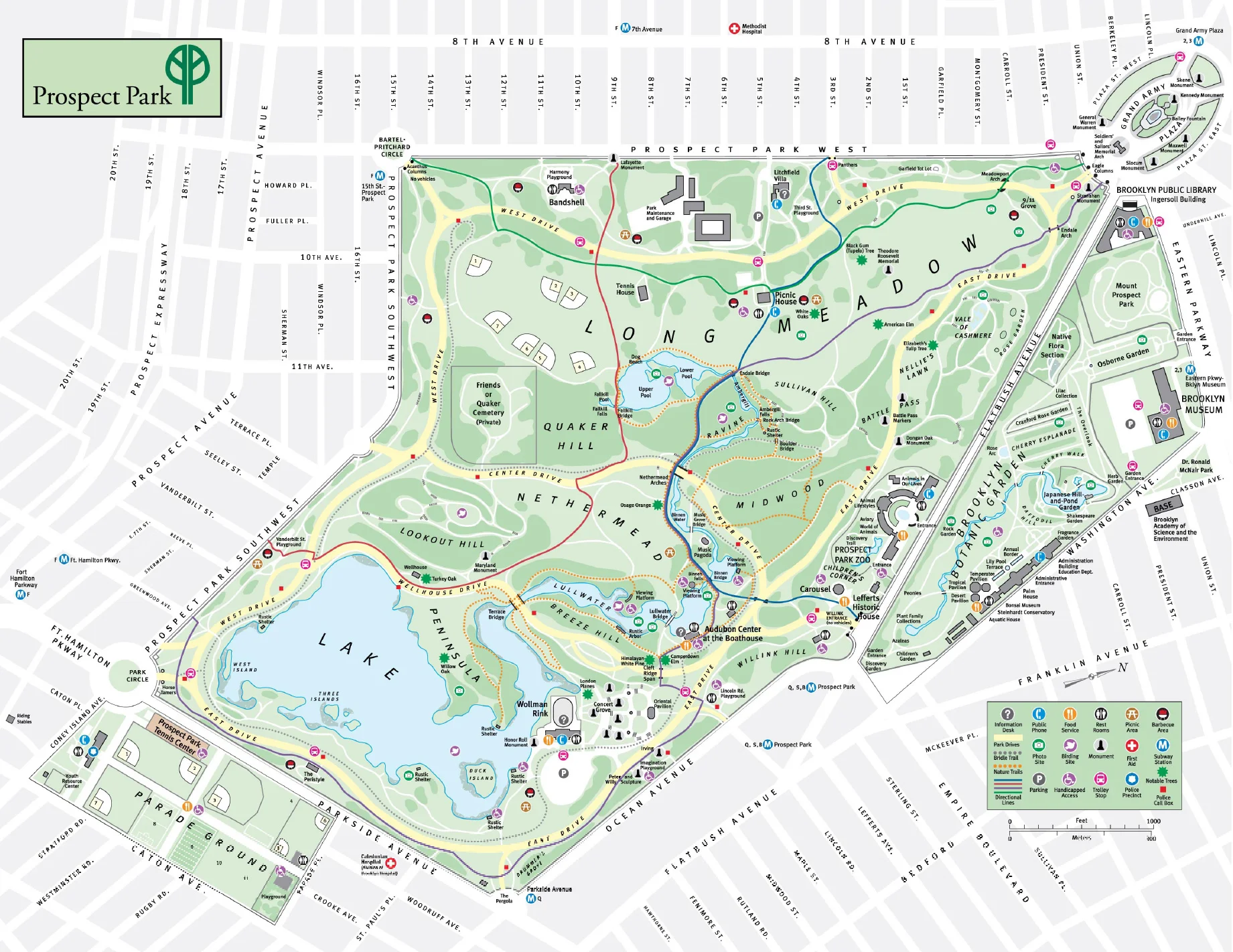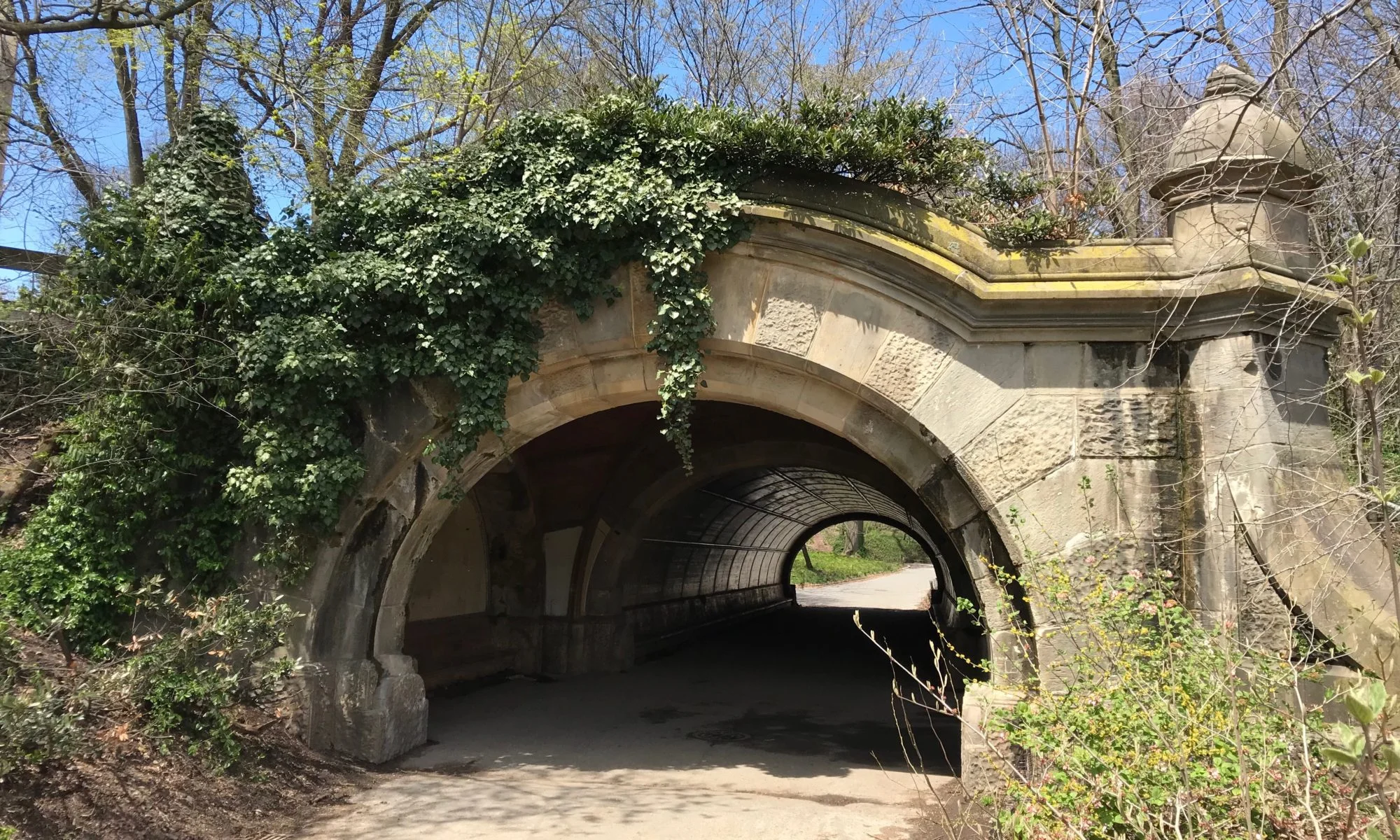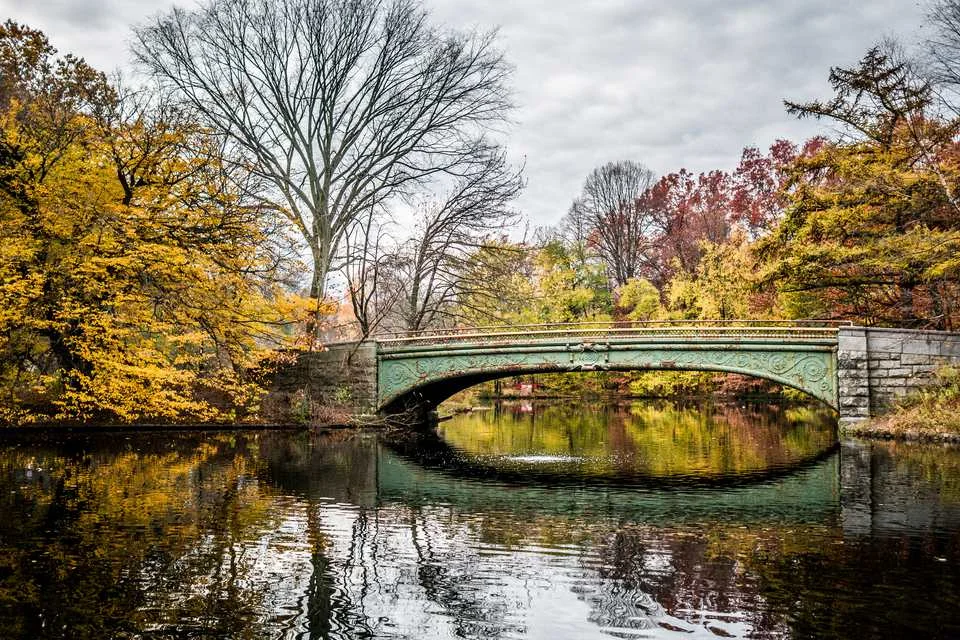Prospect Park.
Prospect Park is a gorgeous and historical spectacle of Brooklyn and New York City. It was designed by the same creators of Central Park: Frederick Law Olmstead and Calvert Vaux. The park is filled with attractions, such as a zoo, playgrounds and sports fields. There are also attractions around the edges the park. The history, significance and attractions of the park include:
Location of the Battle of Brooklyn
Monuments, zoo, recreation centers, museum, botanic garden and library
Natural attractions and forest paths
Before Prospect Park became a park, the land was a forest with main paths leading to the river’s edge to Manhattan. This land was part of the battleground of the Battle of Brooklyn, or Battle of Long Island. One of these paths was a significant bottleneck for the Continental Army to stall the British troops in the first days of the American Revolutionary War. Near Valley Grove Pass, American patriots fired on the British on the morning of August 27th, 1776, before being slaughtered by the outnumbering troops. Hessians, German mercenaries, hired by the British pushed through the pass [1]. However, in the heat of battle, many Americans were able to evacuate to Brooklyn Heights. This was a significant battle in that George Washington was able to escape Long Island in the later days, famously crossing the river under the cover of darkness as British ships lay in the harbor, and set up on the Continent to counter the British forces and eventually claim victory of the war.
Construction of the park began with a proposal and purchase of Prospect Hill in 1860 [1]. It is notable that Prospect Park is higher ground relative to most of Brooklyn, and the neighborhood, Park Slope, is named the way it is because it lies on the downward slope coming from the park. Then after the Civil War, the proposal was revised and more land was purchased, and the dirt began to turnover. The park was created October 19, 1867, and is over 500 acres now. Under Robert Moses in the mid-1900s, the park went through most major changes and installations [1]. Playgrounds and buildings were erected throughout the years. Ownership and management had also exchanged between the city and other organizations, such as the Wildlife Conservation Society and Prospect Park Alliance.
Some of the top attractions include:
Prospect Park Zoo
Lakeside Recreation Center
Grand Army Plaza
Brooklyn Museum
Brooklyn Botanic Gardens
Parade Ground
The natural beauty of the park is also impeccable and makes it a good park for running. The odd shape allows an escape from the geometric principles of the city grid streets. The designers did not treat these landscape details lightly. Now, I will not reveal the locations of these landmarks, but I will mention what someone can find in the park. There are waterfalls, streams and forest trails. The paths flow with waterways, leading to benches on the water, lake views and bridges. And in a midst of trees, there are also few classical buildings such as a picnic house, boathouse and pagoda. Explore for yourself the ups and downs, stairs and bridges, houses and falls, and all the seasonal views.
By Nick Borak
Places to Visit
Prospect Park Zoo
A small zoo within the park with interactive exhibits. Great for toddlers.
Lakeside Recreation Center
A newly renovated center that is now an ice rink in the winter, and a skate rink in the summer. It is next to the pond and has stone patios and buildings nearby.
Grand Army Plaza
A plaza with a great arch and fountain at one of the corners of the park. Nearby, there is an immense Brooklyn Public Library. And occasionally, flee markets come up around the park entrance.
Brooklyn Museum & Botanic Garden
Close to Grand Army Plaza, the Brooklyn Museum and Botanic Garden are notable attractions with rich content and host occasional events for the community and organizations.
Parade Ground
Artificial and grass fields next to the park. There is a tennis center, and fields for baseball, soccer and football.
Sources
I FOUND THIS GREAT SOURCE OF DETAILED INFORMATION ON PROSPECT PARK ONLINE
[1] Lancaster, Clay. Prospect Park Handbook. Greensward Foundation, Inc. Published by Long Island University Press. New York : 1972.
DISCLAIMER: Most information is acquired by surfing the internet, reading books and watching documentaries. We try to give credit where credit is due. If you find an error or issue with the content, please contact us so we can try to verify and edit the information.













